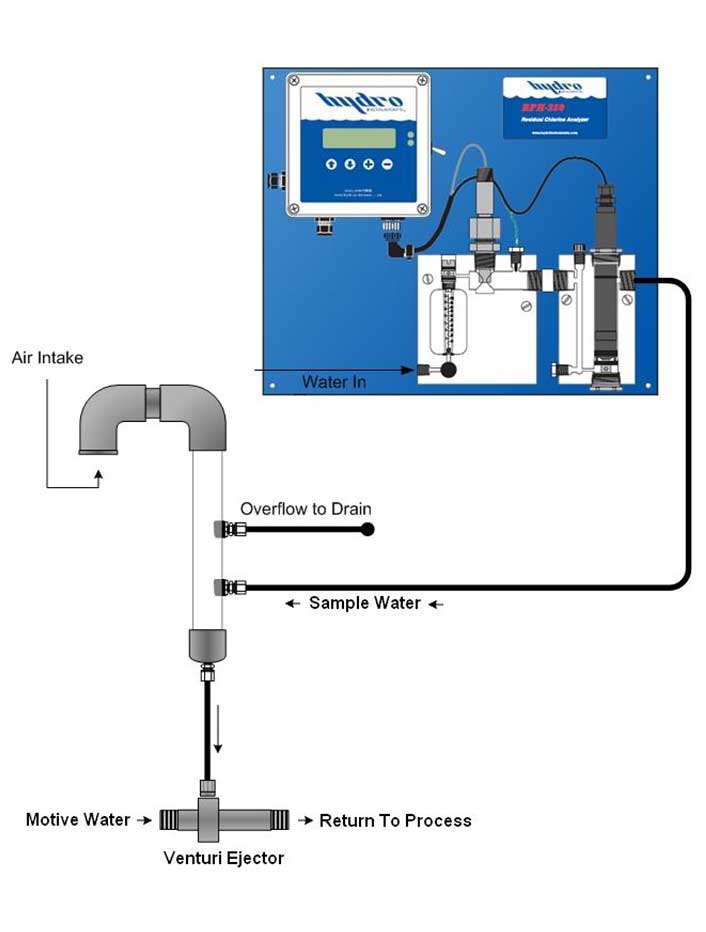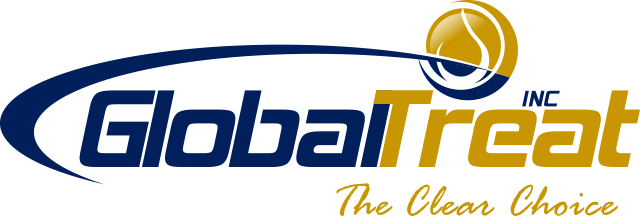The Sample Water Recovery System is available as an accessory option for our Chlorine Analyzers. The purpose is to return sample water back to the process flow in order to eliminate wasting sample water.

DIFFERENT FORMS OF CHLORINE
Free Chlorine
Free chlorine is defined as the concentration of residual chlorine in water present as dissolved gas (Cl2), hypochlorous acid (HOCl), and/or hypochlorite ion (OCl-). A test kit which measures free chlorine will indicate the combined concentrations of HOCl, OCl-, and Cl2.
Combined Chlorine
Combined chlorine is defined as the residual chlorine existing in water in chemical combination with ammonia or organic amines which can be found in natural or polluted waters. Ammonia is sometimes deliberately added to chlorinated public water supplies to provide inorganic chloramines. This process is generally referred to as “chloramination.”
Total Chlorine
Total chlorine is the sum of free and combined chlorine. When chlorinating most potable water supplies, total chlorine is essentially equal to free chlorine because the concentration of ammonia or organic nitrogen compounds (needed to form combined chlorine) will be very low.
When chloramines are present in a municipal water supply, total chlorine will be higher than free chlorine.
Make sure you’re in compliance with the EPA’s Final Ground Water Rule:
40 CFR ˜ Parts 9, 141 and 142 (Federal Register November 08, 2006)
The purpose of this rule is to reduce the incidence of disease. The EPA has established a risk-based guide that targets ground water systems with vulnerability to fecal contamination. Any ground water system that’s in danger of fecal contamination should implement a corrective action for reducing potential illness from microbial pathogens. Global Treat, Inc. has more information regarding disinfection and treatment with chlorine plus equipment monitoring options to help ensure that you are complying with the new GWR rules.

